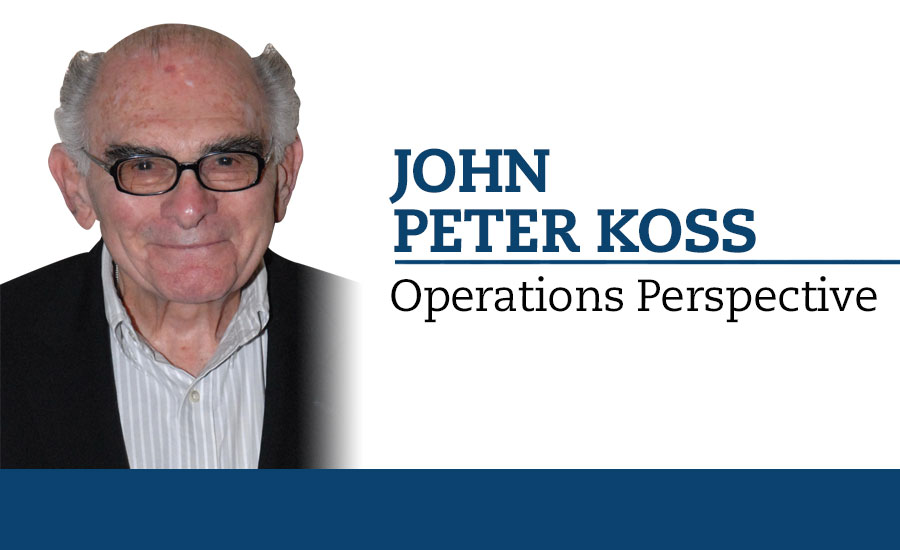Flexibility vital for beverage manufacturing configurations
Adaptable systems continue to see increased demand

Throughout the beverage supply chain, manufacturers and distributors have found that the SKU explosion has created impacts resulting in constantly changing operating conditions, making maintenance a necessity for a flexible manufacturing infrastructure.
Consider the input/output scope of the supply chain and a logical starting point for reviewing and evaluating the possibility of using flexible machinery and equipment is found in the processing department. When producing beverages — whether it’s sparkling, still, alcohol or non-alcohol — variables like materials, process time and equipment capability/capacity are usually quite different; therefore, existing infrastructure configurations might or might not have the flexibility required to process a variety of beverage products and packages.
From an operations perspective, the main flexible manufacturing objective is to possess and utilize an infrastructure throughout the supply chain that can economically produce many types of beverages without the expense of additional space, equipment, technology and labor that might be required. In the beverage arena, differences can significantly vary based on product types (materials, handling, etc.); therefore, depending upon what beverage category is being manufactured, producers might be confronted with how much potential exists for a flexible application. Because major differences exist, the analysis and evaluation of product types and characteristics are important steps in the flexibility consideration process.
For example, some products might require “batch” type processing, which usually involves mixing, aging and holding tanks with temperature, weight, and/or volume control. This also might involve adding ingredients by either manual or semi-automatic methods. There also are other products with different characteristics that cannot be batched, and lend themselves to complete or partial bulk handling. Therefore, these materials must be integrated into an “inline” type of finished product processing where no tanks are needed, and the inline streams directly flow from processing to production.
In each case, product type and/or characteristics might not permit either process being used as an alternative, thereby reducing the flexibility option. However, even though complete flexibility might not be possible, product groups with compatible characteristics can often be an alternative.
Due to the complexity of beverage processing, true manufacturing flexibility is allusive. Yet, all of the ensuing steps — from packaged production to pre-distribution — have seen and will continue to see plenty of innovative opportunities for manufacturing flexibility.
Following the beverage chain from processing to packaging usually dictates how, where and when the product is handled with little or no options at the actual filling point; therefore, the real flexibility challenge begins after filled containers continue to subsequent workstations. Beverage-makers should pose the question: what are flexibility possibilities at each of these stations?
Some views, comments and questions based on observation and study from filling operations to product storage can exemplify the flexibility potential that exists not only with machine and package design, but also with line layouts and personnel utilization for any packaging configuration. The following are hypothetical situations that could emerge in a beverage facility:
Should movement from container input workstations to on-line use require different kinds of conveyors? Yes, the type used does depend on the container.
Questions:
Can one type of conveyor handle all sizes of cans, plastic bottles and glass bottles? Research indicates at this time, no. Some conveyors have been modified to help answer these questions, but currently, one type of conveyor capable handling all these configurations would be flexibility utopia — extreme innovation. Substantiating the point, the next workstation, rinsing (washing) also must be flexible enough to handle all these containers. The industry is not quite there yet.
The filling workstation (including conveyors and closing machines) is critical, which leads to the next set of questions.
How flexible are beverage fillers? Can different containers be accommodated on one filler? How many products can be handled and at what speeds and will filling accuracy be maintained? These issues have been on the table for more than 50 years. They have been partially answered, but the equipment manufacturers have not reached Mars. To this point, container conveyors have been integrated into what fillers and closing machines can accommodate, that is a fact. Now, the flexibility challenge moves to packaging configurations.
Equipment manufacturers always have developed packaging machine types (board wraps, basket carriers, plastic handles, shrink film and other forms) with partial or complete manual change parts for flexibility. However, with the entry of various multi-packs, changed operating conditions have received integrated automatic changeover flexible capability.
Similar flexibility potential exists under most operating conditions at each workstation (packaging to palletizers) as well as the actual line layouts (using combined machines or personnel assignments). This is true because in today’s beverage environment, the type of equipment and the packages capable of being handled must possess a higher degree of flexibility than in the past. BI
Looking for a reprint of this article?
From high-res PDFs to custom plaques, order your copy today!





